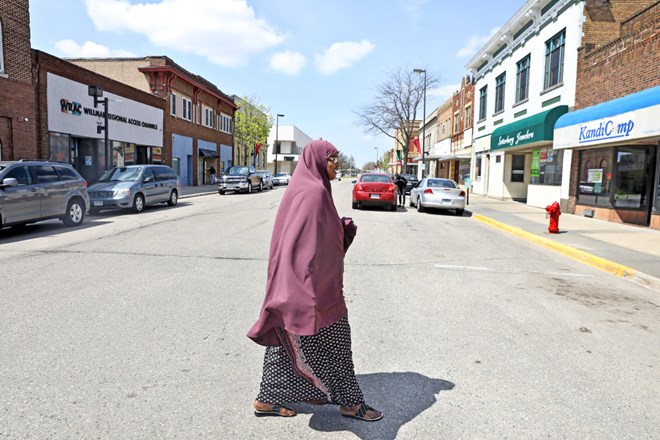
Friday May 17, 2019
by Hannah Jones
.JPG) Thomas Friedman says Willmar has succeeded where other small, middle-American towns have failed: By welcoming the new. Renee Jones Schneider, Star Tribune
Thomas Friedman says Willmar has succeeded where other small, middle-American towns have failed: By welcoming the new. Renee Jones Schneider, Star Tribune
Thomas Friedman remembers the Willmar his aunt and uncle called home. The couple moved to the largely “white, Lutheran, Scandinavian town” in 1949, and for decades, he paid them regular visits. He remembers one visit in particular, about 40 years ago, when his aunt told him confidentially that she’d been at the grocery store one day and heard someone speaking Spanish.
This moment stuck with him, and he thinks about it even more now, decades after his aunt and uncle passed away. That’s because the Willmar of today is not even close to the Willmar they knew.
In the ’80s and ’90s, the first few Latino migrants trickled in for seasonal farm work. Then, after the Jenni-O turkey processing plant needed more workers, a few began to settle in and take work as meatpackers. A little over a decade ago, Somali and Karen refugees moved in due to plentiful work and cheap housing. And for the past five years, a wave of immigrants has turned to calling it home.
Today, Friedman says, Willmar’s 21,000-head population is nearly half Latino, Somali, and “a Noah’s ark of other East African and Asian immigrants.”
You can read all of this in Friedman’s detailed column in the New York Times, where he designates the town as an “American melting pot” nestled in southwest Minnesota. But unlike what we tend to hear about other small rural towns in the Midwest, Friedman argues that Willmar has found a way to rise where other communities fall.
“The cliché about America today is that we’re a country divided between two coasts,” he says. “Two coasts that are liberalizing, pluralizing, globalizing, and modernizing. And between is ‘flyover America,’ where everyone voted for Donald Trump, is suffering from addictions, and is waiting for the 1950s to return.”
Willmar, he says, has bucked that narrative. It has welcomed immigrants as new neighbors, integrated them into the community, put them to work, and reaped almost zero unemployment levels as a result. And he wants the current presidential administration – and those who espouse its politics – to take note. The title of this column is, “President Trump, Come to Willmar.”

Friedman says thanks for this newly transformed Willmar go to a number of favorable conditions and a lot of elbow grease. It required cultural liaisons to help new students with limited English or “interrupted” formal education. It required buy-in from businesses, and a large demand for workers. (It’s much easier to welcome people who are different from you if you desperately need to hire them.)
And it required community leaders like Marv Calvin, Willmar’s former fire chief and current mayor, to be committed to making inclusion work. In the early 2000s, as more East Africans started settling there, Calvin himself helped them purchase an old school building to start a mosque in town.
Of course, a lot of Minnesotans can tell you that as wondrous as this transformation may seem, it hasn’t exactly been without its bumps and hiccups along the way.
Among them include, most famously, Ron Christianson, a city council member who, in 2017, made his opinions on welcoming newcomers abundantly clear. He was caught “liking” offensive Facebook content about Somali and Mexican immigrants supposedly having lower IQs and being more inclined to commit crimes.
He wasn’t the only one who thought that way, either. During a heated open forum about said Facebook activity, several residents came up to the mic and defended Christianson. One, Joe Fernkes, went on a tirade about how Somali people are “taking over the whole damn town” and “chasin’ blond-haired, blue-eyed girls.” The tirade got more vile from there.
But Friedman isn’t claiming the town is perfect. He’s claiming it’s changing for the better, and it’s nice to see the Willmar residents who agree with him sharing the column on Twitter. The comments are mostly glowing with pride and talking about how much they love what their town has achieved.
Along with the sugar and sunshine comes a dire lesson.
“What’s happening in Willmar tells you just how deep this is going and why every town in America needs to get caught trying to make diversity work — or it will wither,” he says. “It’s that simple.”